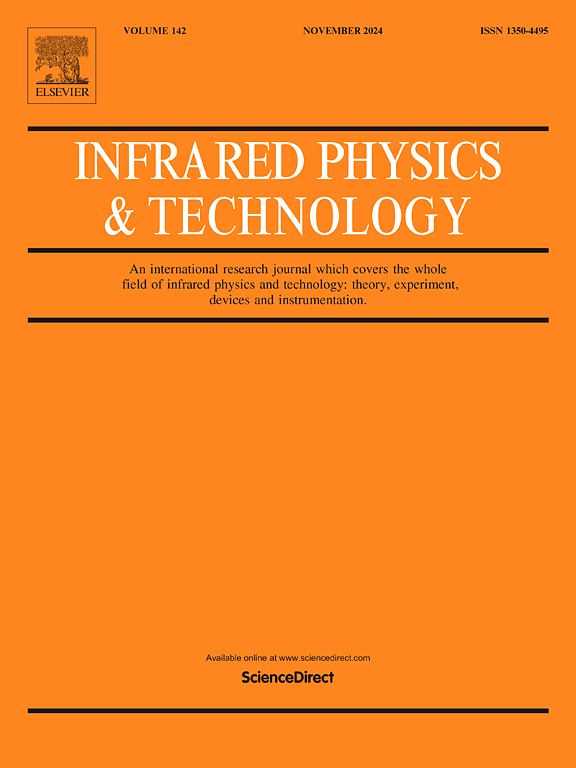双端抽运Er:SGGG晶体的热性能和激光性能
IF 3.1
3区 物理与天体物理
Q2 INSTRUMENTS & INSTRUMENTATION
引用次数: 0
摘要
在连续波(CW)模式下,一些Gd3-xCaxMgyZrx+yGa5-x-2yO12 (SGGG)激光晶体无法承受泵浦光的高能量密度,严重影响激光器性能,甚至导致晶体开裂。本文研究了Er:SGGG激光晶体的热学性质和光学性质,为热分布模拟提供了详细的参数。首次在Er:SGGG晶体中证明了双端泵浦结构,与传统的单端泵浦技术相比,它可以显著减轻热应力。在激光性能方面,实现了450mw的最大输出功率,Mx2/My2的光束质量因子为4.0/3.4,波长中心位于2794.6 nm, FWHM为0.7 nm。该结果可为利用SGGG晶体开发和应用中红外激光器提供有益的参考。本文章由计算机程序翻译,如有差异,请以英文原文为准。

Thermal and laser performance of Er:SGGG crystal through double end-pumping configuration
In continuous-wave (CW) mode, some Gd3-xCaxMgyZrx+yGa5-x-2yO12 (SGGG) laser crystals are unable to withstand the high energy density of the pump light, significantly impacting laser performance and even leading to crystal cracking. In this paper, the thermal and optical properties for Er:SGGG laser crystal are investigated, which are detailed parameters to use for simulation of heat distribution. A double end-pumping configuration in Er:SGGG crystal is demonstrated for the first time, it can significantly mitigate thermal stress compared with traditional single-pumping technique. In terms of laser performances, the maximum output power of 450 mW is realized, the beam quality factors of / are 4.0/3.4, and the center of wavelength is located at 2794.6 nm with a FWHM of 0.7 nm. This result could provide a beneficial reference to the development and application of mid-infrared lasers using SGGG crystals.
求助全文
通过发布文献求助,成功后即可免费获取论文全文。
去求助
来源期刊
CiteScore
5.70
自引率
12.10%
发文量
400
审稿时长
67 days
期刊介绍:
The Journal covers the entire field of infrared physics and technology: theory, experiment, application, devices and instrumentation. Infrared'' is defined as covering the near, mid and far infrared (terahertz) regions from 0.75um (750nm) to 1mm (300GHz.) Submissions in the 300GHz to 100GHz region may be accepted at the editors discretion if their content is relevant to shorter wavelengths. Submissions must be primarily concerned with and directly relevant to this spectral region.
Its core topics can be summarized as the generation, propagation and detection, of infrared radiation; the associated optics, materials and devices; and its use in all fields of science, industry, engineering and medicine.
Infrared techniques occur in many different fields, notably spectroscopy and interferometry; material characterization and processing; atmospheric physics, astronomy and space research. Scientific aspects include lasers, quantum optics, quantum electronics, image processing and semiconductor physics. Some important applications are medical diagnostics and treatment, industrial inspection and environmental monitoring.

 求助内容:
求助内容: 应助结果提醒方式:
应助结果提醒方式:


